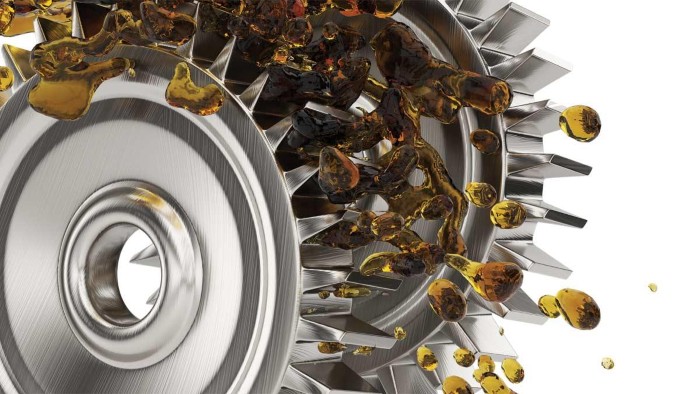
As wind turbines are becoming increasingly popular as a source of renewable energy, proper maintenance and monitoring of their components are crucial. One of the key factors that affect wind turbine performance is gear oil consumption. Knowing how much gear oil your wind turbine needs can ensure optimal performance and prolong its lifespan.
However, with so many factors to consider, it can be challenging to determine the exact amount of gear oil required. In this in-depth guide, we'll explore all the essential considerations, from understanding gear oil requirements to calculating the necessary amount, to help ensure your wind turbine performs optimally. So, if you are looking to learn more about gear oil usage in wind turbines, read on!
Factors Affecting Gear Oil Consumption

Factors that affect the consumption of gear oil in a wind turbine include operating temperature, maintenance practices, and the age of the turbine.
The operating temperature of the turbine plays a crucial role in gear oil consumption. Higher temperatures can lead to increased evaporation and degradation of the oil, resulting in the need for more frequent oil changes.
Maintenance practices also impact gear oil consumption. Regular maintenance, including proper lubrication and filter replacement, can help optimize gear oil performance and extend its lifespan. On the other hand, ineffective maintenance practices can cause increased wear and tear on the gears, leading to higher oil consumption.
Lastly, the age of the turbine is a factor to consider. Older turbines tend to have more worn-out gears, which can result in higher gear oil consumption due to increased friction and leakage.
Understanding Gear Oil Requirements
To understand the gear oil requirements of your wind turbine, you need to consider its specific operational needs and manufacturer recommendations. Gear oil plays a crucial role in the performance and longevity of the turbine's gearbox, as it provides lubrication and reduces friction between the gears.
The amount of gear oil needed depends on factors such as the size and type of wind turbine, the gearbox design, and the operating conditions. Manufacturers typically provide guidelines on the appropriate gear oil viscosity, additives, and change intervals.
It's important to follow these recommendations to ensure optimal gear performance and prevent premature wear or failure. Regular oil analysis and maintenance checks are also essential to monitor the condition of the gear oil and detect any potential issues early on.
Calculating Gear Oil Usage for Wind Turbines

You can calculate the gear oil usage for your wind turbine by considering its specific operational needs and following manufacturer recommendations.
To begin, determine the gear oil capacity of your turbine's gearbox, which is typically provided by the manufacturer. Next, identify the oil change interval specified by the manufacturer, which will depend on factors such as the turbine's design and operating conditions.
Divide the gear oil capacity by the oil change interval to obtain the average amount of gear oil used per unit of time. For example, if the gearbox has a capacity of 100 liters and the oil change interval is 2 years, the average gear oil usage would be 50 liters per year.
Best Practices for Gear Oil Maintenance
To ensure optimal performance and prolong the lifespan of your wind turbine gearbox, it's crucial to follow best practices for maintaining the gear oil. Here are some key steps you should take:
- Regular oil sampling and analysis:
- Perform routine oil sampling to monitor the condition of the gear oil.
- Analyze the oil samples for contaminants, wear particles, and degradation.
- Proper filtration and cooling:
- Install effective filtration systems to remove contaminants and maintain oil cleanliness.
- Ensure proper cooling of the gear oil to prevent overheating and degradation.
- Regular oil changes:
- Establish a regular oil change schedule based on manufacturer recommendations.
- Replace the gear oil at the specified intervals to maintain its performance and lubricating properties.
Importance of Regular Gear Oil Monitoring

Regular monitoring of the gear oil is essential for maintaining the optimal performance and longevity of your wind turbine gearbox. Gear oil plays a critical role in lubricating the gears and bearings within the gearbox, reducing friction and heat generation. Over time, the gear oil can degrade due to factors such as high operating temperatures, contamination, and oxidation.
Regular monitoring allows you to identify any potential issues early on and take necessary corrective measures, preventing costly breakdowns and minimizing downtime. By monitoring the gear oil, you can assess its viscosity, cleanliness, and chemical composition. This information helps you determine the need for oil changes, filter replacements, or additional maintenance tasks.
Timely monitoring and maintenance ensure that your wind turbine gearbox operates efficiently, maximizing energy production and minimizing repair costs.
Conclusion
Properly maintaining gear oil in wind turbines is a critical aspect of ensuring their effective operation. With varying turbine sizes, operational conditions, and maintenance practices, gear oil consumption can be influenced by different factors.
Regularly checking gear oil levels and quality, as well as adhering to best practices for maintenance, can help wind turbine operators sustain exceptional performance and extend their equipment's lifespan. A well-maintained turbine will save on energy costs and minimize emergency repairs, allowing long-term profitability and success.

























